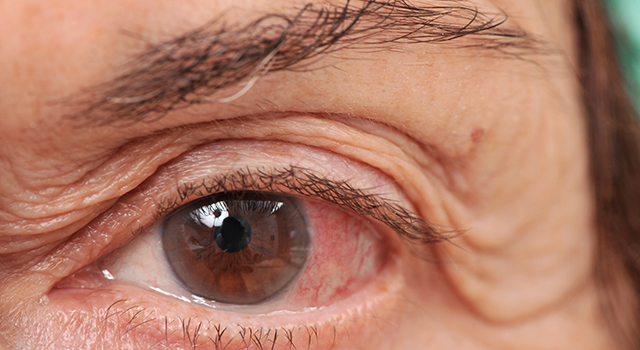
Conjunctivitis, also referred to as pink eye, is one of the most common eye infections, particularly with kids. It can be caused by viruses, bacteria or even irritants, for example chlorine in swimming pools, pollen, and ingredients in cosmetics, or other irritants, which come into contact with the eyes. Certain kinds of conjunctivitis may be quite contagious and quickly infect many people in close proximity such as in school and at the office.
This infection occurs when the thin transparent layer of tissue protecting the white part of your eye, or conjunctiva, gets inflamed. A sign that you have conjunctivitis is if you notice eye itching, discharge, redness or swollen eyelids and eyes that are crusty in the morning. Symptoms of pink eye may occur in one or both eyes. Pink eye infections can be divided into three basic types: viral, bacterial and allergic conjunctivitis.
The viral manifestation is usually caused by the same viruses that produce the recognizable red and watery eyes, runny nose and sore throat of the common cold. Symptoms of the viral form of conjunctivitis are likely to stick around for seven to fourteen days and like other viruses cannot be treated with medication. You may however, be able to reduce some of the symptoms by applying soothing drops or compresses. The viral form of pink eye is contagious until it's gone, so meanwhile, remove discharge and try to avoid sharing pillowcases or towels. Children who have viral pink eye should stay home from school for three days to a week until symptoms disappear.
Bacterial conjunctivitis is caused by a common bacterial infection that gets into the eye often from an external object entering the eye that carries the bacteria, such as a dirty finger. This type of infection is most often treated with antibiotic eye drops or cream. One should notice an improvement after just a few days of treatment, but always be sure to complete the entire course of antibiotics to prevent pink eye from recurring.
Allergic pink eye is not infectious or contagious. It is usually a result of a known allergy such as pollen, pet dander or smoke that triggers an allergic response in their eyes. The first step in alleviating allergic conjunctivitis is to eliminate or avoid the irritant, if possible. To ease discomfort, try artificial tears or compresses. In more severe cases, non-steroidal anti-inflammatory medications and antihistamines might be prescribed. When the infection persists for a long time, topical steroid eye drops may be used.
In all forms of conjunctivitis, implementing proper hygiene is the best way to prevent it from spreading. Try not to touch your eyes, and if you do, make sure to wash your hands well.
While conjunctivitis is often a highly treatable eye infection, there is sometimes a chance it could deteriorate into a more serious problem. Any time you notice symptoms of pink eye, be certain to have your eye doctor take a look in order to see what the best treatment will be.































